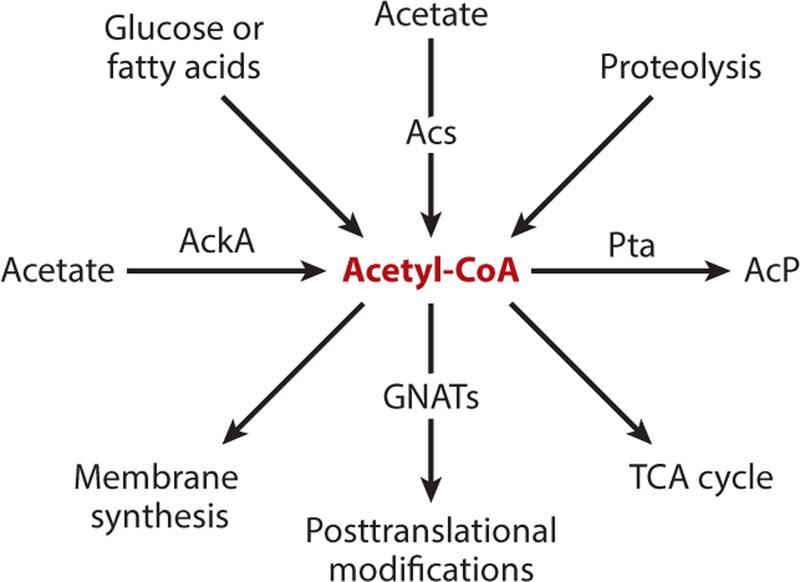Figure 4.
Sources and fates of acetyl-CoA. Under low-acetate conditions (10 mM), acetate can be converted to acetyl-CoA via Acs (as described in Figure 3). Under high-acetate conditions (50 mM), AckA activates acetate to acetyl-CoA, while the Pta converts acetyl-CoA to AcP. Metabolism of glucose and other short-chain fatty acids also leads to the production of acetyl-CoA. Proteolysis leads to an increased accumulation of free amino acids, which are eventually deaminated and oxidized to acetyl-CoA. All of these sources of acetyl-CoA can funnel this high-energy molecule into synthesis of fatty acids for membrane production, lead into the TCA cycle for production of reducing equivalents, or be utilized for acetylation reactions. Abbreviations: AckA, acetate kinase; AcP, acetyl-phosphate; Acs, acetyl-CoA synthetase; GNAT, Gcn5 histone N-acetyltransferase; Pta, phosphotransacetylase.

